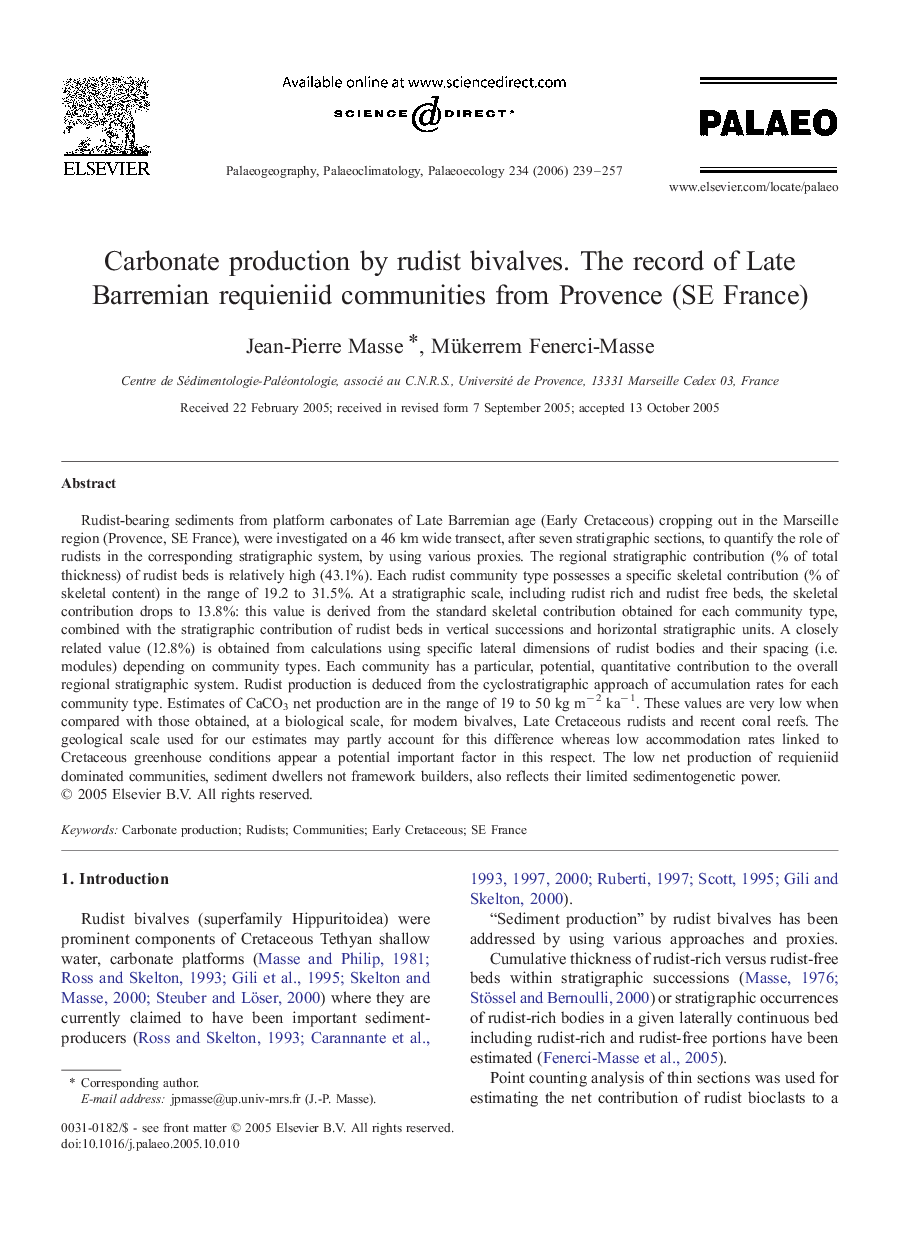| کد مقاله | کد نشریه | سال انتشار | مقاله انگلیسی | نسخه تمام متن |
|---|---|---|---|---|
| 4469563 | 1622374 | 2006 | 19 صفحه PDF | دانلود رایگان |

Rudist-bearing sediments from platform carbonates of Late Barremian age (Early Cretaceous) cropping out in the Marseille region (Provence, SE France), were investigated on a 46 km wide transect, after seven stratigraphic sections, to quantify the role of rudists in the corresponding stratigraphic system, by using various proxies. The regional stratigraphic contribution (% of total thickness) of rudist beds is relatively high (43.1%). Each rudist community type possesses a specific skeletal contribution (% of skeletal content) in the range of 19.2 to 31.5%. At a stratigraphic scale, including rudist rich and rudist free beds, the skeletal contribution drops to 13.8%: this value is derived from the standard skeletal contribution obtained for each community type, combined with the stratigraphic contribution of rudist beds in vertical successions and horizontal stratigraphic units. A closely related value (12.8%) is obtained from calculations using specific lateral dimensions of rudist bodies and their spacing (i.e. modules) depending on community types. Each community has a particular, potential, quantitative contribution to the overall regional stratigraphic system. Rudist production is deduced from the cyclostratigraphic approach of accumulation rates for each community type. Estimates of CaCO3 net production are in the range of 19 to 50 kg m− 2 ka− 1. These values are very low when compared with those obtained, at a biological scale, for modern bivalves, Late Cretaceous rudists and recent coral reefs. The geological scale used for our estimates may partly account for this difference whereas low accommodation rates linked to Cretaceous greenhouse conditions appear a potential important factor in this respect. The low net production of requieniid dominated communities, sediment dwellers not framework builders, also reflects their limited sedimentogenetic power.
Journal: Palaeogeography, Palaeoclimatology, Palaeoecology - Volume 234, Issues 2–4, 18 May 2006, Pages 239–257